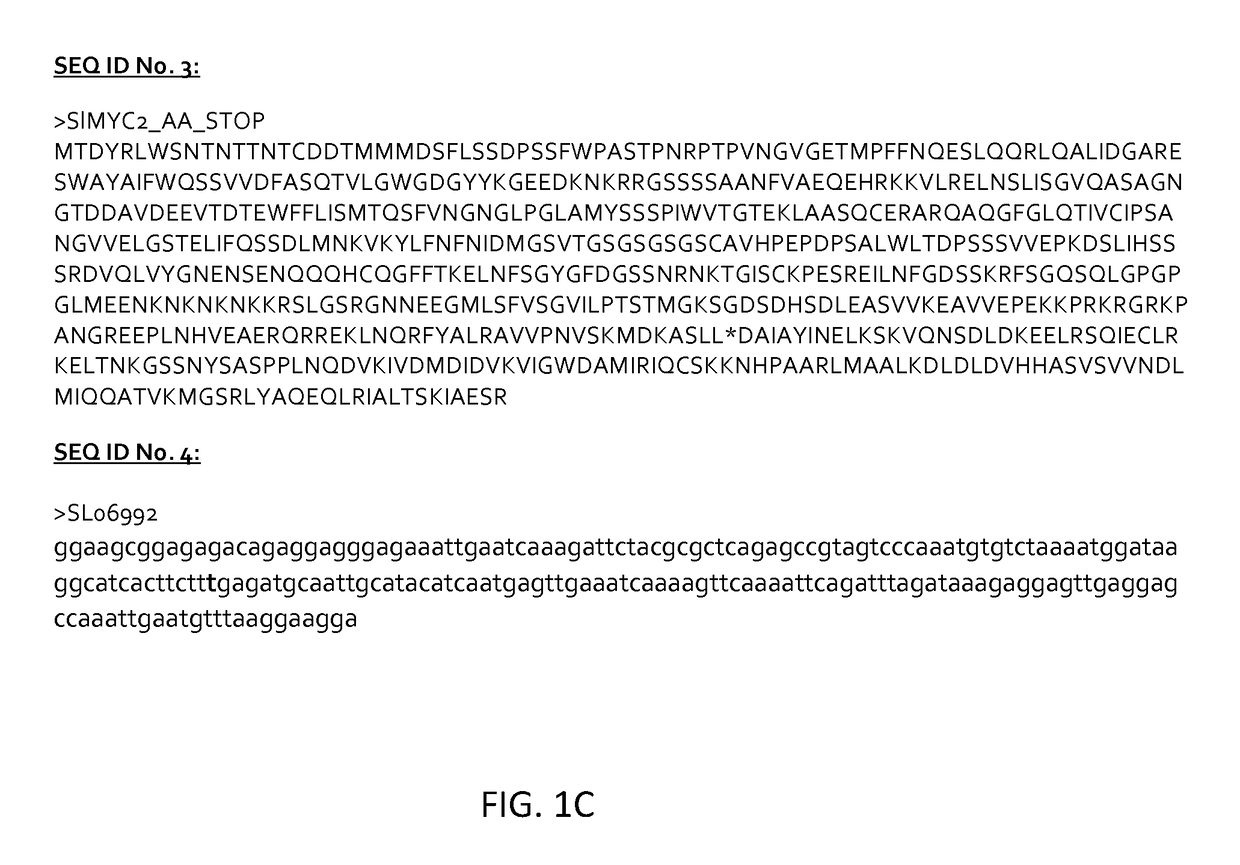Tomato plants allowing the establishment of mites
a technology of lycopersicum and tomato, which is applied in the field of tomato plants allowing the establishment of mites, can solve the problems of many factors in the commercial vegetable production, including the production of tomato, and affect the total yield that can be reached, and the residues of plants and fruits could be compromising the health of consumers
- Summary
- Abstract
- Description
- Claims
- Application Information
AI Technical Summary
Benefits of technology
Problems solved by technology
Method used
Image
Examples
example 1
[0161]Creation of Solanum lycopersicum Plants of the Invention
[0162]Seeds of two Solanum lycopersicum breeding lines, TR306 and T029, were treated with ems (ethyl methane sulfonate) by submergence of approximately 10.000 seeds into an aerated solution of 0.5% (w / v) ems during 24 hours at room temperature.
[0163]The treated seeds were germinated and the resulting plants were grown in a greenhouse to produce M2 seeds.
[0164]After maturation, M2 seeds were harvested and bulked in one pool. The resulting pool of M2 seeds was used as starting material to identify individual M2 plants that showed an aberrant glandular hair phenotype.
[0165]The efficacy of the genetic modification procedure was assessed by determining the occurrence of bleached plants, which is indicative for chlorophyll loss due to modifications in genes directly or indirectly involved in the formation or accumulation of chlorophyll. The type VI trichome phenotype is depicted in FIGS. 5A-B.
example 2
[0166]Identification of a Solanum lycopersicum Plant that Allows for the Establishment the Predatory Mite Amblyseius swirskii
[0167]Two breeding lines (TR306 and T029), a commercially available hybrid and three mutants resulting from the experiment as described in Example 1 were used in a bioassay to investigate whether the predatory mite Amblyseius swirskii is able to establish on these Solanum lycopersicum plants. As a positive control, Capsicum annuum variety Compas RZ was also included in this experiment.
[0168]In Table 1, an overview of the lines and varieties is given. The bioassay took place in a multi-tunnel greenhouse in Spain under Mediterranean growing conditions. This greenhouse was divided into 4 compartments and one of them was divided into 40 walk-in cages of 5×3.5×4 meter (l×w×h), of which five were used during the experiment. Treatments were compared in a complete randomized block design with five replicates of seven plant species: six tomato varieties (5 selected+1 ...
example 3
QTL Mapping
[0173]The Solanum lycopersicum mutant comprising the modified Slmyc2 gene of the invention was crossed with parent line TR306. From this cross, a F2 mapping population was generated, which was used for population-specific genetic map construction and QTL-mapping.
[0174]In total, 940 markers were used to analyze the 86 offspring individuals. Of these, 241 were polymorphic, informative (enough segregation) and useful (not many U-scores).
[0175]The F2 individuals were scored in two classes: hl (having the trait of the invention), wt (wild type phenotype, including unclear phenotypes).
[0176]As the trait was being considered (monogenic) recessive, this should result in a 3:1 segregation of the trait. Indeed, the trait distribution in this translation is wt:hl 61:25, which is not significantly different from the expected 3:1 ratio (chi2-test=0.38).
[0177]Linkage analysis was performed with MapQTL 6.0. First, interval mapping was performed to identify regions or markers linked to t...
PUM
| Property | Measurement | Unit |
|---|---|---|
| temperatures | aaaaa | aaaaa |
| size | aaaaa | aaaaa |
| disease resistance | aaaaa | aaaaa |
Abstract
Description
Claims
Application Information
 Login to View More
Login to View More - R&D
- Intellectual Property
- Life Sciences
- Materials
- Tech Scout
- Unparalleled Data Quality
- Higher Quality Content
- 60% Fewer Hallucinations
Browse by: Latest US Patents, China's latest patents, Technical Efficacy Thesaurus, Application Domain, Technology Topic, Popular Technical Reports.
© 2025 PatSnap. All rights reserved.Legal|Privacy policy|Modern Slavery Act Transparency Statement|Sitemap|About US| Contact US: help@patsnap.com



